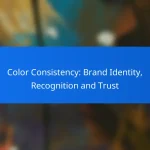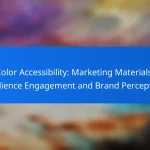Color psychology plays a crucial role in brand recognition by influencing emotional responses and shaping consumer perceptions. By strategically selecting colors, brands can enhance recall and create a strong identity that resonates with their target audience, ultimately driving purchasing decisions. Understanding the emotional impact of different colors allows brands to tailor their marketing strategies effectively, fostering deeper connections with consumers.
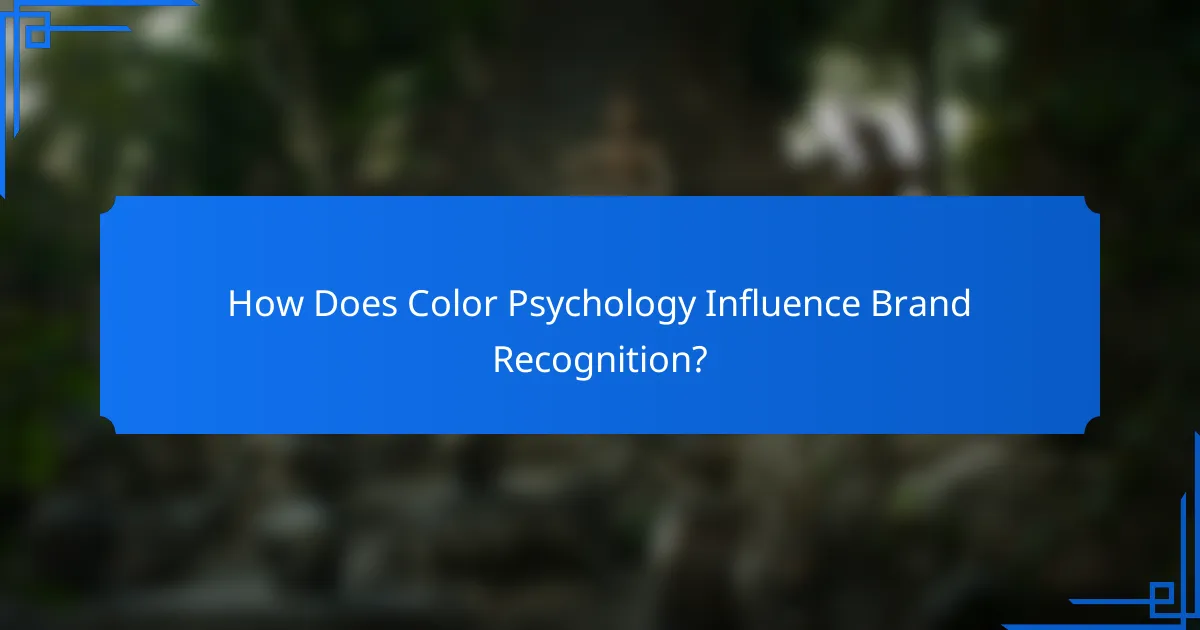
How Does Color Psychology Influence Brand Recognition?
Color psychology significantly impacts brand recognition by evoking emotional responses and shaping consumer perceptions. Brands that effectively utilize color can enhance recall and foster a strong identity in the minds of consumers.
Color associations enhance brand recall
Colors are often linked to specific emotions and concepts, which can enhance brand recall. For instance, blue is frequently associated with trust and reliability, making it a popular choice for financial institutions. By aligning color choices with desired brand attributes, companies can create a stronger connection with their audience.
Research indicates that consumers can recognize colors faster than text or logos, emphasizing the importance of color in brand identity. Brands that consistently use specific colors can improve their visibility and memorability in a crowded marketplace.
Consistent color usage builds brand identity
Consistency in color usage is crucial for establishing a cohesive brand identity. When brands use the same color palette across all platforms, it reinforces recognition and builds familiarity. This can lead to increased loyalty as consumers begin to associate those colors with positive experiences.
To maintain consistency, brands should develop a clear style guide that outlines color codes and usage guidelines. This ensures that all marketing materials, from packaging to digital content, reflect the same visual identity.
Case study: Coca-Cola’s red branding
Coca-Cola’s use of red is a prime example of effective color psychology in branding. The vibrant red not only captures attention but also evokes feelings of excitement and energy, aligning perfectly with the brand’s image. This consistent use of red across all marketing channels has made Coca-Cola instantly recognizable worldwide.
The brand’s success demonstrates how a well-chosen color can become synonymous with a product, creating a lasting impression in consumers’ minds. By leveraging color psychology, Coca-Cola has maintained its position as a leading beverage brand for decades.
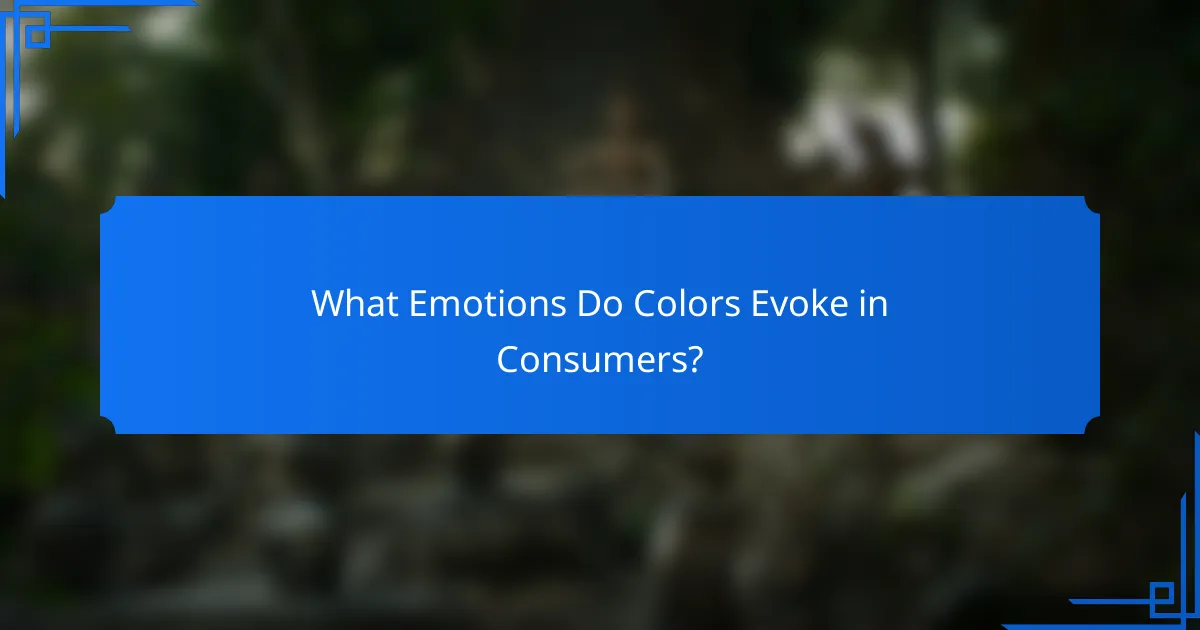
What Emotions Do Colors Evoke in Consumers?
Colors play a significant role in shaping consumer emotions and perceptions, influencing their purchasing decisions. Understanding how different colors evoke specific feelings can help brands tailor their marketing strategies effectively.
Blue promotes trust and reliability
Blue is often associated with feelings of trust, dependability, and calmness. Many financial institutions and tech companies use blue in their branding to convey stability and security, which can enhance customer confidence.
When incorporating blue into branding, consider using varying shades. Lighter blues can evoke tranquility, while darker blues may suggest professionalism. A consistent blue theme can help reinforce a brand’s reliability over time.
Red stimulates excitement and urgency
Red is a powerful color that evokes strong emotions such as excitement, passion, and urgency. It is frequently used in sales promotions and clearance events to encourage quick decision-making among consumers.
Brands can leverage red by using it strategically in call-to-action buttons or sale banners. However, overuse can lead to feelings of aggression or anxiety, so balance it with neutral tones to create a more inviting atmosphere.
Green is associated with health and tranquility
Green is commonly linked to health, nature, and tranquility, making it a popular choice for brands focused on wellness and sustainability. This color can evoke feelings of relaxation and balance, appealing to consumers seeking a healthier lifestyle.
When using green in branding, consider the context and shade. Softer greens promote calmness, while brighter greens can signify freshness and vitality. Brands in the health and organic sectors often benefit from incorporating green into their visual identity.

How Can Brands Use Color Psychology to Drive Sales?
Brands can leverage color psychology to influence consumer emotions and drive sales by selecting colors that resonate with their target audience. By understanding how different colors evoke specific feelings, brands can create a visual identity that enhances recognition and encourages purchasing behavior.
Color can influence purchase decisions
Colors play a significant role in shaping consumer perceptions and can directly impact purchase decisions. For instance, warm colors like red and orange can create a sense of urgency, often leading to impulse buys, while cooler colors like blue and green can evoke feelings of trust and calmness, encouraging longer consideration times.
Research suggests that up to 90% of snap judgments about products can be based on color alone. Therefore, brands should carefully consider their color choices to align with the emotions they wish to evoke in potential customers.
Effective color combinations enhance appeal
Combining colors effectively can amplify a brand’s message and visual appeal. Complementary color schemes, which use colors opposite each other on the color wheel, can create striking visuals that capture attention. For example, a combination of blue and orange can convey both trust and excitement.
Brands should also consider cultural connotations of colors when creating combinations. For instance, while white symbolizes purity in many Western cultures, it can represent mourning in some Eastern cultures. Understanding these nuances can help brands avoid potential misinterpretations.
Examples of successful color strategies
Many well-known brands have successfully utilized color psychology to enhance their market presence. For example, Coca-Cola’s use of red evokes excitement and energy, aligning perfectly with their brand message of fun and enjoyment. Similarly, Starbucks employs green to symbolize growth and freshness, reinforcing its commitment to quality coffee.
Another example is McDonald’s, which uses red and yellow to stimulate appetite and create a sense of urgency. These color choices have contributed to their strong brand recognition and customer loyalty. Brands can learn from these examples to create their own effective color strategies that resonate with their audience.
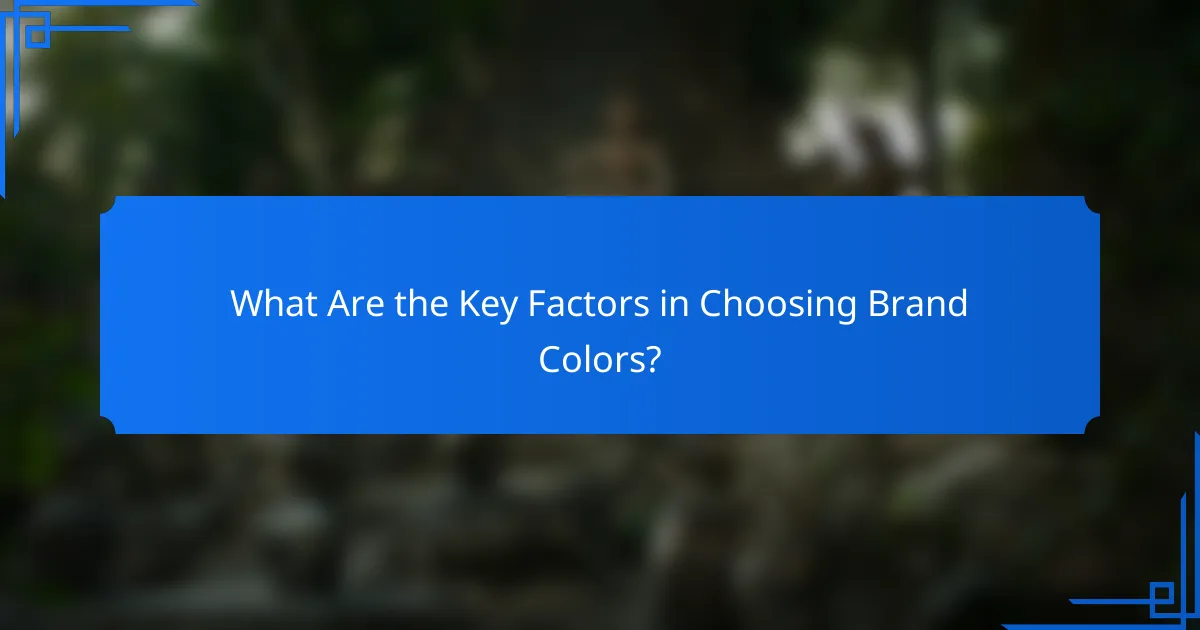
What Are the Key Factors in Choosing Brand Colors?
Choosing brand colors involves understanding the target audience, adhering to industry standards, and considering the psychological effects of color combinations. These factors collectively influence brand recognition and consumer emotional responses.
Target audience preferences
Understanding the preferences of your target audience is crucial when selecting brand colors. Different demographics may respond differently to colors based on cultural associations, age, and gender. For instance, younger audiences might prefer vibrant colors, while older consumers may lean towards more subdued tones.
Conducting surveys or focus groups can provide insights into color preferences. This feedback can guide your choices to ensure they resonate with your intended market, enhancing brand connection and loyalty.
Industry standards and trends
Each industry has its own color conventions that can influence brand perception. For example, blue is often associated with trust and reliability, making it popular in finance and healthcare sectors. In contrast, green is frequently used in eco-friendly brands to evoke a sense of nature and sustainability.
Staying updated on industry trends is essential. Regularly reviewing competitor branding and emerging color trends can help ensure your brand remains relevant and appealing to consumers.
Psychological impact of color combinations
The psychological effects of color combinations can significantly affect consumer behavior. Certain colors can evoke specific emotions; for example, red can create a sense of urgency, while blue tends to promote calmness. Understanding these associations allows brands to craft effective visual identities.
When combining colors, consider the balance and contrast to enhance visibility and appeal. Tools like color wheels can help identify complementary colors, ensuring that your brand’s palette is both attractive and psychologically effective.
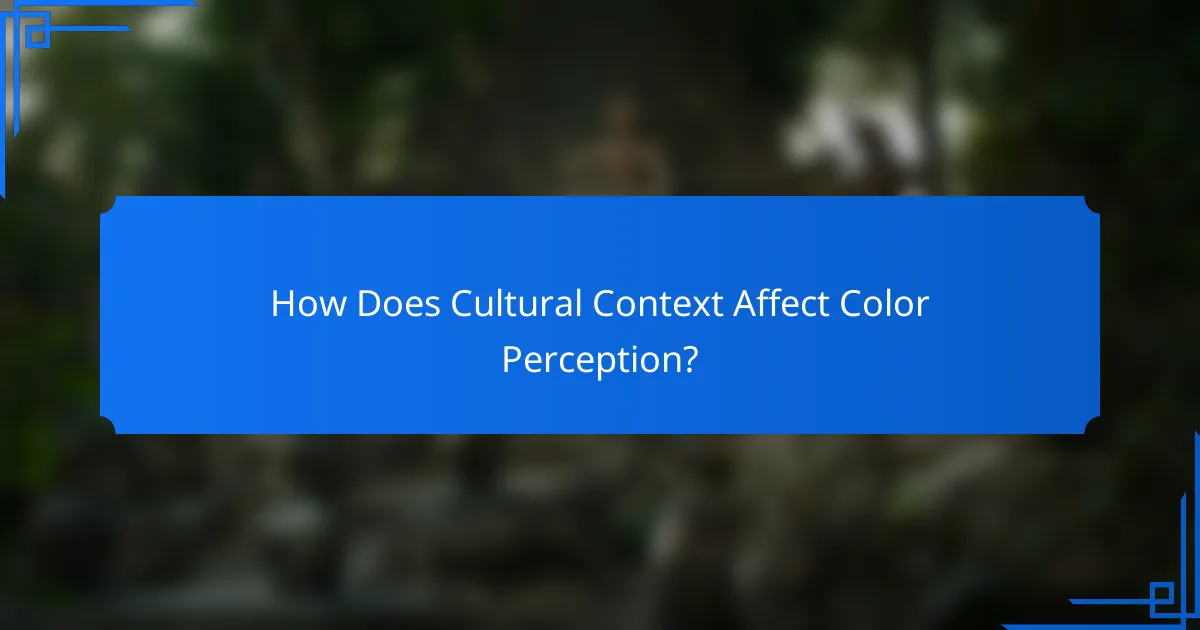
How Does Cultural Context Affect Color Perception?
Cultural context significantly shapes how individuals perceive colors, influencing their emotional responses and brand recognition. Different cultures may associate distinct meanings and feelings with the same color, which can impact consumer behavior and brand loyalty.
Color meanings vary across cultures
Colors can carry unique meanings depending on cultural backgrounds. For instance, while white is often associated with purity and weddings in Western cultures, it may symbolize mourning in some Asian cultures. Understanding these differences is crucial for brands aiming to connect with diverse audiences.
Additionally, red may evoke feelings of excitement and passion in Western societies, whereas in some Eastern cultures, it can signify good fortune and celebration. Brands must consider these variations to avoid misinterpretation and ensure their messaging resonates appropriately.
Localization strategies for global brands
To effectively engage with international markets, brands should implement localization strategies that account for cultural color perceptions. This involves researching local color associations and adjusting marketing materials accordingly. For example, a brand might choose different color schemes for packaging based on the target region’s cultural significance of those colors.
Moreover, conducting focus groups or surveys in specific markets can provide insights into local preferences. Brands should also be cautious of potential pitfalls, such as using colors that may be offensive or carry negative connotations in certain cultures. A thoughtful approach to color usage can enhance brand recognition and foster positive emotional connections with consumers worldwide.

